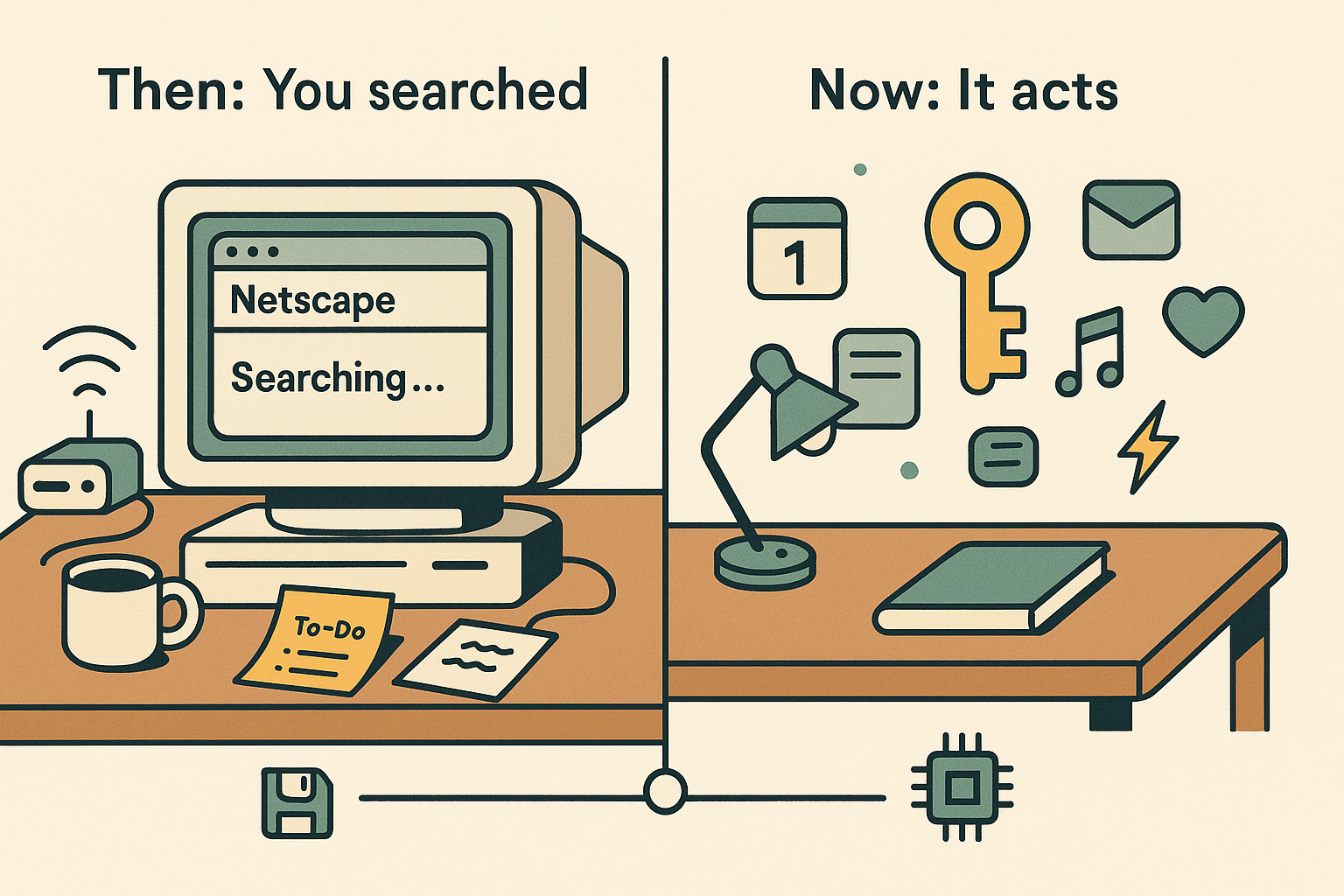Unpacking the OpenAI Saga
The Weekend That Shook Silicon Valley: Unpacking the OpenAI Saga and What It Teaches Us About Power and AI
For 72 hours in November 2023, the world watched as the unthinkable unfolded. Sam Altman, the charismatic face of the AI revolution, was fired from the company he helped build, OpenAI. What followed was not a quiet corporate transition but a blistering drama of corporate mutiny, employee revolt, and a staggering reversal of fortune that left industry titans and the general public alike struggling to keep up.
The OpenAI saga was more than just a juicy tech industry scandal. It was a Shakespearean play staged in the server farms of the future, a stark revelation of the brutal tensions between idealism and commercial reality, and a masterclass in where true power resides in the modern corporation.
This is the story of the OpenAI takeover, and the profound lessons every leader, entrepreneur, and observer must learn from it.
Act I: The Sudden Fall of a Tech Prophet
It began on a Friday afternoon with a blog post. In a move that stunned the world, OpenAI’s board of directors announced that Sam Altman was being dismissed as CEO. The reason? He was allegedly “not consistently candid in his communications with the board,” hindering its ability to exercise its responsibilities.
The statement was vague, corporate, and utterly explosive.
To the outside world, Sam Altman was OpenAI. He was the polished, articulate prophet of the AI age, seamlessly navigating congressional hearings, global summits, and product keynotes with equal parts vision and pragmatism. Under his leadership, OpenAI had evolved from a niche research lab into a global powerhouse, launching ChatGPT and igniting an arms race that reshaped the entire tech industry.
His sudden ousting felt like a betrayal of that momentum. The board, comprised largely of members from the “non-profit” side of OpenAI’s unique structure, seemed to be acting on motives the rest of the world couldn’t see. Speculation ran rampant: Was it a safety concern? A secret breakthrough? A simple power struggle?
The initial narrative was one of decisive, if mysterious, board action. But that narrative was about to shatter.
Act II: The Rebellion of the Talent
The first sign that the board had miscalculated came quickly. Greg Brockman, OpenAI’s co-founder and chairman, resigned in solidarity, a powerful vote of no confidence. But the real earthquake was yet to come.
Over the weekend, it became clear that the board did not have the support of its most crucial asset: its employees. Senior executives and researchers began publicly voicing their support for Altman. The crescendo came in the form of a signed letter, which ultimately garnered over 700 of OpenAI’s 770 employees. The message was simple and brutal: Reinstate Sam Altman and the previous board, or we walk.
This was not a mere threat; it was an existential crisis. In a company whose value is almost entirely intellectual, the mass exodus of its world-class talent would have rendered OpenAI a hollow shell, a multi-billion dollar brand with no engine. The employees weren’t just protesting; they were leveraging their collective power to stage a corporate coup.
Simultaneously, Altman, far from licking his wounds, was being courted by Microsoft. CEO Satya Nadella, a key ally and OpenAI’s largest investor, publicly backed Altman and offered to house him and any willing OpenAI employees in a new, advanced AI research unit within Microsoft.
The board was suddenly isolated, facing a unified front of employees, its most important business partner, and the very man it had just fired.
Act III: The Stunning Restoration
By Tuesday, the rebellion was complete. The board that had fired Altman was itself dismantled. A new, interim board was installed, featuring former Salesforce co-CEO Bret Taylor and former Treasury Secretary Larry F. Summers. Sam Altman was reinstated as CEO, not as a penitent employee, but as a conquering hero with a renewed mandate.
The old guard, which had prioritized the non-profit’s mission of “safe and beneficial” AGI above all else, was out. The new regime, while paying lip service to safety, was unequivocally aligned with the commercial and growth-oriented vision that Altman represented.
The takeover was complete. The king was not just restored to the throne; his opponents had been banished from the castle.
The Deeper Lessons from the OpenAI Crucible
Beyond the headlines and the drama, this episode offers a masterclass in the new dynamics of power, corporate governance, and the AI industry itself.
1. The Clash of Visions: Non-Profit Idealism vs. Commercial Reality
At the heart of the conflict was OpenAI’s bizarre and arguably unworkable governance structure. It began as a non-profit dedicated to ensuring that artificial general intelligence (AGI) would benefit all of humanity. To fund the immense computational resources required, it created a “capped-profit” arm, allowing it to take billions in investment from partners like Microsoft.
This created an inherent tension. The board’s fiduciary duty was not to maximize shareholder value, but to the non-profit’s original mission—to protect humanity from AGI, even if that meant slowing its development.
Sam Altman, while a believer in the mission, was also a pragmatist. He understood that to lead the race, OpenAI needed capital, product velocity, and market dominance. In the board’s eyes, his aggressive commercial push may have looked like a betrayal of the company’s founding principles. His “lack of candor” likely pertained to moves that the board felt were accelerating progress too rapidly and without sufficient oversight.
The coup proved that the commercial reality had won. The sheer economic momentum of a multi-billion-dollar enterprise, coupled with the ambitions of its employees and partners, was too powerful to be contained by a non-profit board’s caution.
2. The New Center of Corporate Power: Talent
The single most important lesson for any 21st-century company is this: In the knowledge economy, the talent holds the ultimate power.
The board had the legal authority to fire the CEO. But it failed to recognize that its authority was a hollow shell without the consent of the governed—the engineers, researchers, and developers who were the company. By threatening a mass exodus, the employees demonstrated that their loyalty was to a leader and a mission, not to a corporate entity or a legal structure.
This is a watershed moment for tech workers everywhere. It shows that when you control the core intellectual property and the ability to execute, you have more leverage than any traditional governance chart suggests. Companies that fail to align their leadership with the values and vision of their top talent do so at their own peril.
3. The Myth of the “Mission-Driven” Board
The OpenAI board was designed to be a guardian against the dangers of AGI. Yet, in its attempt to execute this duty, it nearly destroyed the very entity it was meant to steward. Its decision was so opaque, so poorly communicated, and so strategically inept that it united the entire company and its key partner against it.
This reveals a critical flaw: a board insulated from commercial pressures can become dangerously detached from operational and human realities. Their “pure” focus on the long-term existential risk blinded them to the immediate existential risk they themselves were creating. Effective governance requires not just philosophical rigor but also political savvy and a deep connection to the operational heartbeat of the company.
4. The Rise of the Strategic Partner as Kingmaker
Microsoft’s role in this drama cannot be overstated. As the primary investor with billions of dollars and vast Azure cloud infrastructure at stake, Satya Nadella was not a passive observer. By immediately offering a safe harbor to Altman and his loyalists, he applied immense pressure on the OpenAI board.
He effectively called their bluff. The board was faced with a choice: capitulate and salvage the partnership, or stay the course and watch their company’s value migrate directly into Microsoft’s offices down the street. Nadella’s calm, strategic maneuvering ensured that Microsoft’s interests were protected, regardless of the outcome, and positioned the tech giant as the ultimate power broker.
The Aftermath: What Now for OpenAI and the AI Race?
Sam Altman returns to OpenAI with his power consolidated, but the challenges are far from over.
A Fractured Culture: Can a company that just went through a civil war truly heal? While many are celebrating, there will be lingering distrust and ideological rifts between those who prioritized safety and those who back Altman’s commercial vision.
Governance Under a Microscope: The new board will be under intense scrutiny to create a structure that balances safety and speed without being suicidal. They must rebuild trust with employees, investors, and the public.
Intensifying Competition: The event revealed OpenAI’s vulnerability. Rivals like Google DeepMind, Anthropic, and a resurgent xAI will be aggressively poaching talent and capitalizing on any perceived instability or recklessness.
The weekend that shook Silicon Valley is over, but its echoes will be felt for years. It was a stark reminder that the development of world-changing technology is not a sterile, linear process. It is a deeply human drama, fraught with ambition, idealism, fear, and the relentless pursuit of power.
The story of OpenAI is no longer just about building artificial intelligence. It’s a case study in the fallible, passionate, and often unpredictable human intelligence that guides it. And as we race toward an AI-saturated future, understanding that human element may be the most critical skill of all.

